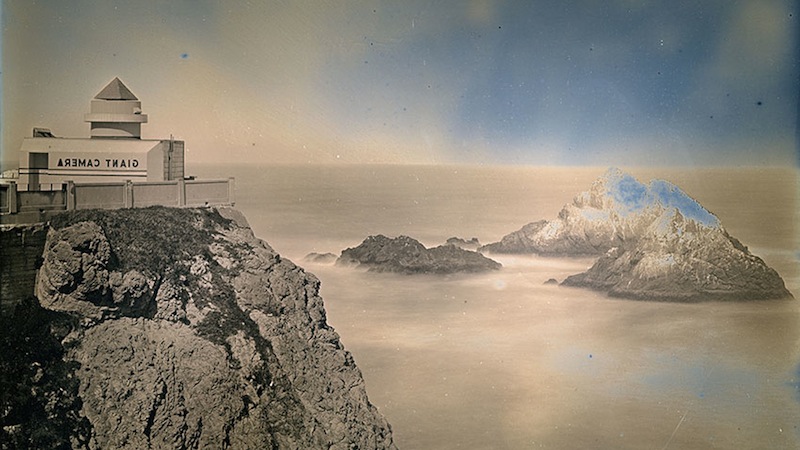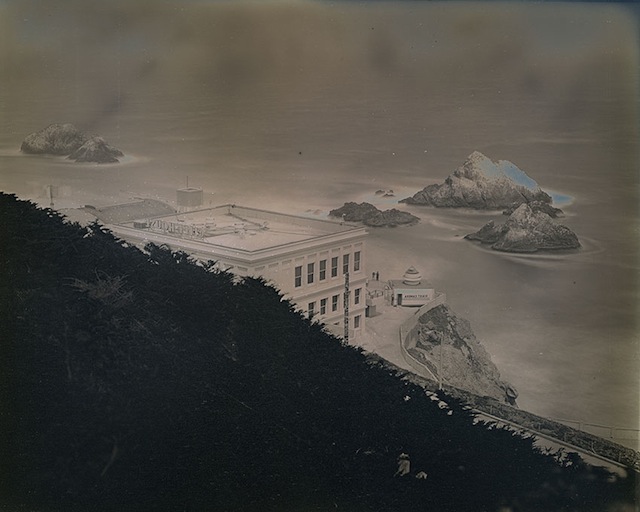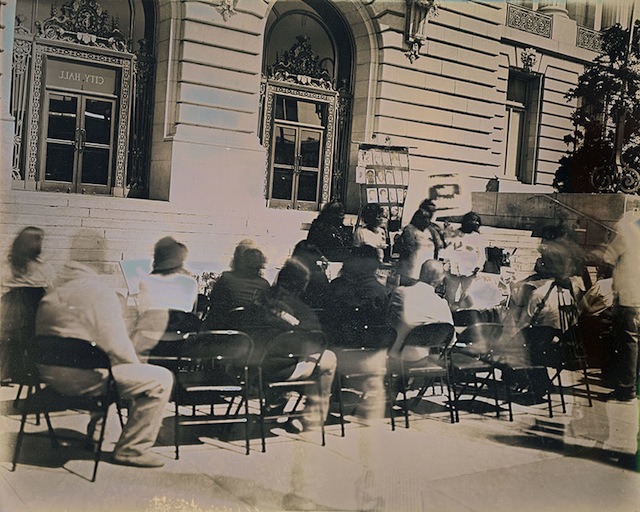The history of San Francisco is intimately linked with the daguerreotype and other early photographic methods. Daguerreotypes, one-of-a-kind photographs on silver-coated copper plates, were developed in the late 1830s and gained popularity in the 1840s. During that time, the small California town of Yerba Buena transferred from Mexican to U.S. hands, welcomed Mormon emigrants, and briefly boasted a Hudson’s Bay Company trading post. But when gold was found in the Sierra Nevada foothills to the east, the recently renamed San Francisco exploded with speculation fever.
The oldest known photograph of San Francisco is from 1850, the same year the city was incorporated and California joined the Union. The remarkable boom that occurred over the next several decades was captured on high-tech media like the daguerreotype and its successors, such as the albumen print. Though there are famous daguerreotypes from Paris, London, and New York, none of them so fortuitously captured the birth of great city, forever linking San Francisco with the history of photography.
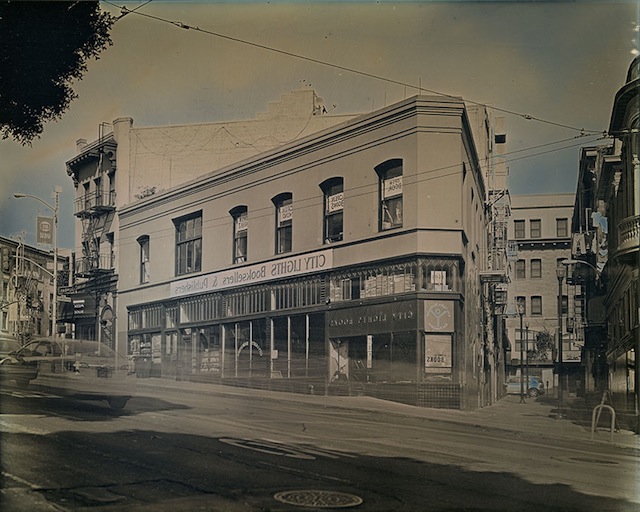
In this context, Binh Danh’s daguerreotypes of contemporary San Francisco, on view in This, Then, is San Francisco at Haines Gallery, are inseparable from the city’s history. Photographs like City Lights Booksellers and Publishers (2014) at times appear both modern and historic. The twenty-first century sedan zipping by, the bike rack, and the still-active bookstore all note the city we are familiar with. Yet, the building depicted was constructed in 1907, long after the gold mines dried up, but older than most buildings in the city and still reminiscent of a nebulous “old” San Francisco. The Chinatown buildings in the background and the street car wires conjure images of the city’s past, even more so because of the daguerreotype’s antique coloring and mirror image.
B and C Laundromat Barbary Coast Trail, Chinatown (2014) looks north on Waverly Place in Chinatown, showing a laundromat housed in a building from 1906 and a row of signs for other businesses. At the end of the street is the historic Goong Quon Cheong building, now home to Kam Lok Restaurant and the Gee How Oak Tin Benevolent Association. Chinatown’s distinctive and tourist-friendly architecture only arose from the ashes of the 1906 earthquake. Prior to the tremor, Chinatown, within the bounds of the raucous Barbary Coast, was a dense collection of uninspiring wooden tenements. The Chinatown recalled in this image is historic, but it is nothing like the Chinatown that stood on the same spot in the daguerreotype’s heyday. Danh’s photograph is a historical pastiche, but is there a more appropriate way to depict San Francisco?
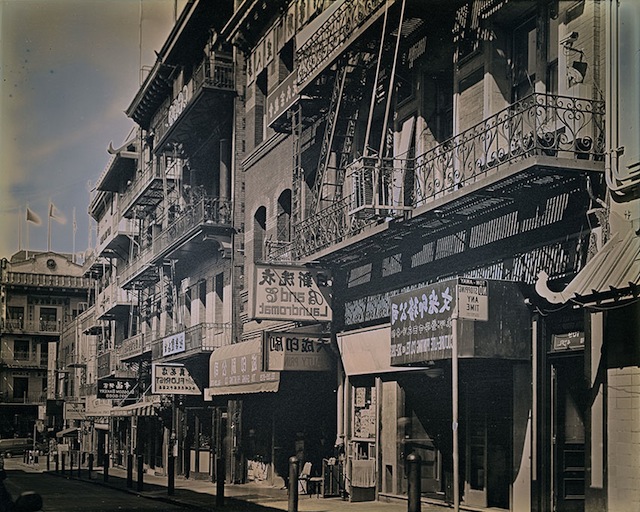
This, Then, is San Francisco is not just of interest to lay historians; it is of equal value to aesthetes. Cliff House and Seal Rocks from Sutro Heights Park (2014) is among the most stunning works in the exhibition. Shot on the western edge of the city, San Francisco’s trademark fog hugs the reflective copper plate like greasy fingerprint smudges. The sun beams on Seal Rocks, radiating like the nuclear waste on the bottom of the ocean near the Farallon Islands. The Pacific Ocean, often tempestuous, is pacified by the camera’s long exposure, looking more like a sedate pool of mercury than a wrecker of ships. The Cliff House, one of three to adorn the site and the best so far at avoiding fire, is partly obscured by a monolith of trees and shrubbery in the foreground.
